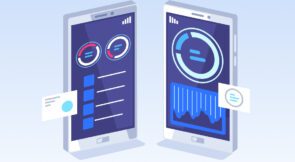Deploying software is a bit like opening the curtain on a Broadway play. By the time the lights dim and the curtain rises, the audience sees a well-oiled machine—not to mention the product of months of practice and preparation.
Likewise, software has to go through heavy deployment testing before it reaches the public so that user experiences stay strong. To compete in today’s market, companies need to produce high-quality software with minimal bugs and vulnerabilities.
Of course, it’s impossible to eliminate bugs altogether. But with the right lineup of deployment testing solutions, you can drastically reduce them—and patch them much faster.
Keep reading to learn all about deployment testing, why it’s a critical part of the development process, and some tools that can help.
What Is Deployment Testing?
Businesses typically create software using the six-step software development life cycle (SDLC) framework. This consists of software development, integration, testing, staging, production, and deployment.
The final stage, deployment, involves migrating software from a controlled environment into production and then out into the world. Of course, a lot has to happen before you can deploy software. For example, a significant amount of deployment testing must take place first.
By going through deployment testing, you can discover underlying issues and prevent them from sneaking into production. This saves time and lessens the likelihood you’ll do something that causes your users grief.
Without a doubt, attempting to rush software to market without proper deployment testing creates more work, higher costs, and unhappy customers. Unfortunately, this often happens when developers don’t have the right tools, processes, and guidance in place.
The Three Stages of Deployment
Companies tend to have different strategies and workflows when it comes to deploying software. But generally speaking, there are three basic stages of deployment, which we’ll briefly examine next.
1. Pre-deployment
The pre-deployment process involves verifying testing, manually verifying functionality, and performing end-to-end testing. This testing is typically done on testing environments, whether local or on the cloud.
For a complete breakdown of the steps you should take during the critical pre-deployment process, check out our pre-deployment primer.
2. Deployment
After completing pre-deployment, the production manager reviews the software and approves it for deployment. At this stage, the software goes live.
Depending on your deployment strategy, you may release the software to a select group of users or your entire base at once.
3. Post-deployment
The next phase is post-deployment. And in many ways, this is where the real work begins.
During post-deployment, you’ll retest features, collect feedback, and monitor software to ensure it runs optimally.
Post-deployment continues throughout the entire life cycle of the software. To clarify, the aim is to continuously develop and launch new features to keep the software fast, secure, and profitable.
The Benefits of Deployment Testing
With a comprehensive deployment testing process in place, your team will enjoy the following benefits.
Seamless Compatibility
Compatibility tests help ensure performance across different hardware, operating systems, networks, browsers, and devices. This enables you to ensure users can use your products productively across devices, with software that works as designed in different environments.
Tighter Security
Before deploying an application, it’s critical to ensure your code is completely watertight. Security testing is critical for identifying vulnerabilities that hackers could potentially exploit. As a result, deployment testing helps you protect against bad actors — and the potential bad outcomes that can result from data breaches (e.g., data breaches, customer churn, and reputational damages).
Lower Costs
Undoubtedly, the earlier you catch bugs and vulnerabilities, the cheaper it is to fix them. Deployment testing drastically lowers software production costs because it enables you to nip problems in the bud. As a result, your development team can continue enhancing the product instead of reworking errors down the road.
Sound Performance
It’s one thing to release software in a controlled environment. It’s quite another to release it into the wild.
For the best results, you’ll want to conduct thorough performance testing across a variety of conditions. To illustrate, if you’re developing an e-commerce app, you would need to see how it handles rapid traffic spikes. That way, you could determine whether you’re able to scale up fast enough to make the most of heavy-traffic periods.
Superior Functionality
Functionality testing ensures that an app is operationally sound. After all, you want to make sure that the application will work properly and intuitively by the time customers access it. Failure to deliver on this front could very well cause users to look for substitute products.
Superior UX
Of course, it’s important to focus on the user experience. Software and applications need to be intuitive and user-friendly to ensure repeat sales and generate solid reviews. By making deployment testing a top priority, you can reduce the likelihood you roll out a major update that’s riddled with bugs — much to the chagrin of a good chunk of your users.
Top Deployment Testing Tools to Explore
Apptim
Apptim integrates directly into your existing CI workflow to capture metrics like power consumption, application render times, device resource usage, and capture crashes on every deployment. The platform is designed to improve mobile app performance by making it easy to discover performance issues in every iteration of your platform that you ship.
Selenium
Selenium lets you test directly in the browser using simple scripts. This is a great tool for automating web applications because it enables you to ditch administrative tasks and focus more intently on the underlying code itself.
Selenium offers three different products:
- WebDriver, which enables you to create regression automation tests and scale them across environments directly in the browser
- IDE, which allows you to quickly reproduce bug scripts and record and playback interactions directly in Chrome, Firefox, or Edge
- Grid, which helps you test at scale across multiple environments and machines from one central location
Testim
Testim provides automated functional testing using AI. Coupled with the fact that it’s highly scalable, flexible, and capable of integrating with CI tools like Jenkins, CircleCI, and GitLab, this makes Testim an ideal choice for deployment testing.
With Testim, you can create stable tests in minutes, taking advantage of artificial intelligence to speed up the testing process with auto-completion and auto-suggestions. You can also build the perfect tool for the job, so to speak, by configuring tests without having to write any code. Since no two applications are the same, this gives you the flexibility you need to help your unique app reach its full potential.
Why Deployment Testing Is Useful
The key takeaway to all of this? Deployment testing is critical for success. Ultimately, it enables you to ship software that’s easier to use and accelerate your workflows to release new versions at higher frequencies. On top of that, it speeds up development processes, giving your team a faster, more efficient way to work.
Testim streamlines deployment testing with an AI-based platform that’s flexible and open. With Testim, you can create stable tests in minutes.
Want to improve your testing game? We also offer a variety of useful educational materials that you can use to get up to speed at your convenience.
You can access live video training sessions, AI certification, and also product coaching. Additionally, we offer a comprehensive library full of e-books, videos, white papers, webinars, and success stories.
Ready to dive in with Testim Automate? Sign up for free today.



